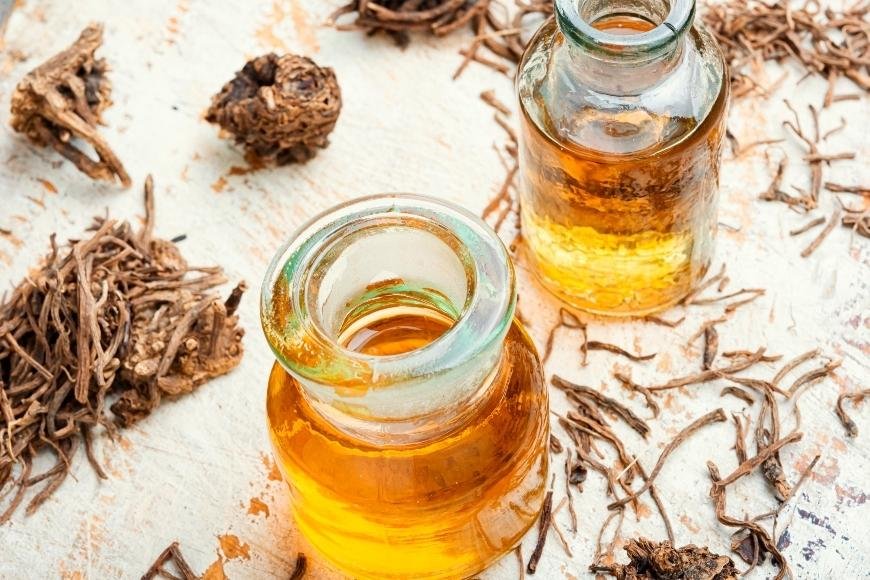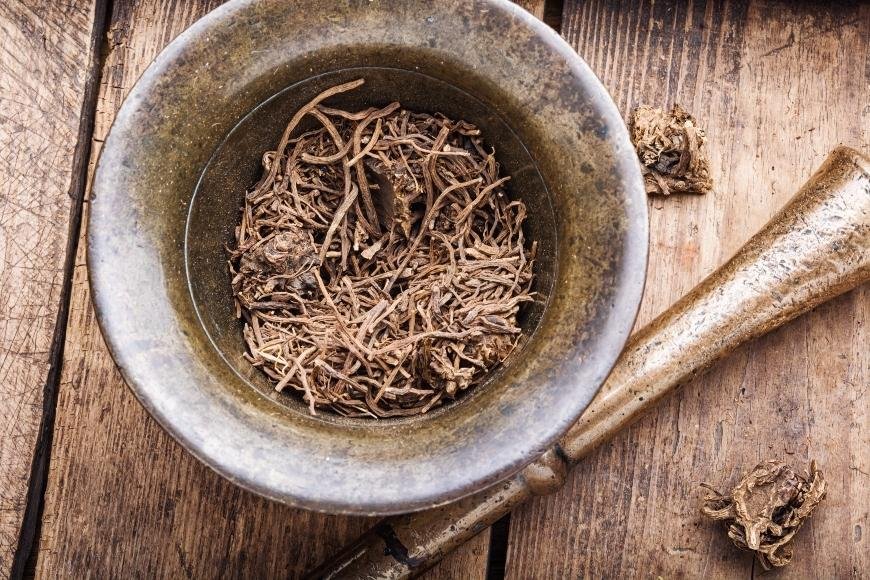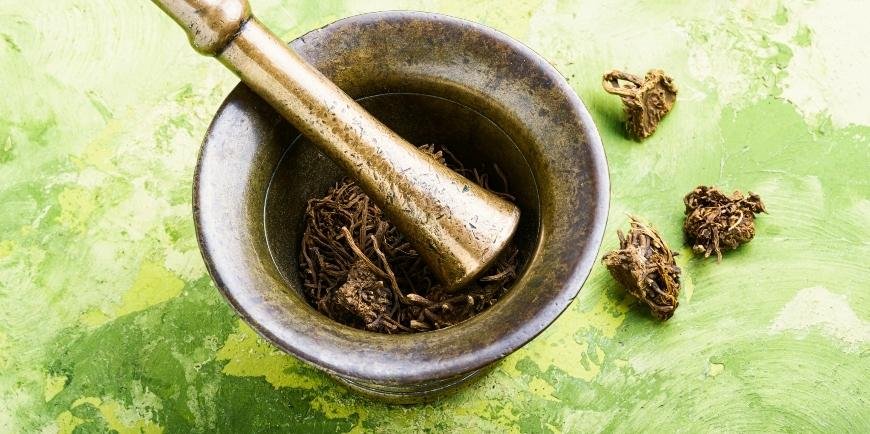How to Extract Valerian
Learn how to extract Valerian with our easy guide, featuring step-by-step instructions, safety tips, and storage advice for herbal supplements.

If you're searching for information on how to extract Valerian, this guide will provide the necessary insight. This comprehensive guide will provide in-depth knowledge on the extraction process of valerenic acid from Valeriana officinalis, a popular herbal supplement known for its calming effects.
We'll discuss why extracting Valerian is beneficial and what materials are required for the process. Additionally, we'll cover a step-by-step method for obtaining this valuable compound from your plant material.
Finally, proper storage techniques and safety precautions will be addressed so that you can confidently utilize your extracted valerenic acid. By following our expert advice on how to extract Valerian, you'll soon have access to this powerful herbal remedy at home.
Table of Contents:
- Why Extract Valerian?
- What You Need to Extract Valerian
- Step-by-Step Process for Extracting Valerian
- Storing Your Extract
- Safety and precautions
- FAQs in Relation to How to Extract Valerian
- Conclusion
Why Extract Valerian?
Valerian is an herb that has been used for centuries to reduce stress and anxiety, improve sleep quality, and provide a calming effect. Extracting Valerian can be done in order to obtain the maximum benefit from this natural remedy. The active ingredient responsible for the therapeutic effects of Valeriana officinalis, known as Valerenic acid, has been identified by studies. Valerian's active ingredient, Valerenic acid, has been demonstrated to have anxiolytic and soporific effects that can be advantageous for individuals struggling with sleep issues or other sleeping difficulties.
What You Need to Extract Valerian

Extracting Valerian root requires a few basic supplies. The main element required is the dried Valerian root, which can be obtained from a range of health food shops and internet vendors. For the extraction process, an alcoholic beverage such as vodka or brandy is necessary to draw out the active compounds from the dried root. A glass jar with a lid is needed to store your extract, as well as cheesecloth and a strainer for filtering out any impurities that may remain after extraction.
In order to extract valerian, you need a few basic supplies such as dried valerian root and an alcohol-based solvent. Having the required materials, it's time to start the procedure for obtaining this potent herb.
Step-by-Step Process for Extracting Valerian
Extracting valerian from its root is a simple process that requires few ingredients. To get started, you’ll need one cup of dried and chopped valerian root, two cups of vodka or other high-proof alcohol, and a glass jar with an airtight lid.
Begin by combining the valerian root and alcohol in the jar. Make sure to use enough liquid to completely cover the roots so they can be fully extracted. Secure the jar firmly and set it in a shadowy, cool spot for at least one lunar cycle. Shake the jar once per day to ensure all parts of the root are evenly exposed to the alcohol solution.
After four weeks have passed, strain out any solid pieces using cheesecloth or another fine strainer before transferring your extract into smaller bottles with tight lids for storage purposes. The end result should be a light brown shade with an intense herbal aroma, like licorice or chamomile teaa sign that the extraction process was successful.
Once the extraction process is finished, it's essential to keep your extract in an appropriate manner so as to sustain its potency and quality. Next, we will discuss how best to store your extracted valerian for optimal results.
Storing Your Extract
When storing your extracted Valerian, it is important to select the right container and ensure that you are taking all necessary precautions. The best way to store your extract is in an airtight glass jar or bottle. This will help protect the extract from light and moisture which can degrade its potency over time. Label the jar or bottle with a date of production to keep track of its age and duration in storage.
It’s also important to keep your Valerian away from heat sources such as radiators or direct sunlight as this could cause the active ingredients in the extract to break down faster than normal. If possible, store your Valerian at room temperature (around 68-77°F) as extreme temperatures can have an effect on its efficacy.
Valerenic acid, one of the main components of Valerian root, is highly sensitive and breaks down quickly once exposed to oxygen or light. To preserve its potency for longer periods of time, try freezing small portions of your extract in ice cube trays or vacuum seal them before placing them into storage containers like mason jars or airtight bags/containers. This will help prevent oxidation and degradation caused by exposure to oxygen which may reduce their effectiveness over time if not properly stored correctly.
The shelf life of extracted Valerian depends largely on how well it is stored but generally speaking most extracts should last up to two years if kept in a cool dark place away from direct sunlight and other sources of heat/light exposure while being sealed tightly after each use or opening session. However, some studies suggest that valerenic acid may begin breaking down within six months depending on factors such as storage conditions (i.e., humidity levels). Therefore, it is best practice to always check with lab results when determining how effective any herbal supplement still remains before using them medicinally or recreationally.
It is important to store your extract in a cool, dry place away from light and heat. Prior to handling or consuming extract valerian, it is essential to be aware of the safety measures that must be adhered to.
Safety and precautions

When handling valerian, utmost caution must be taken to ensure safety. Valeriana officinalis, or valerian, has been used as a traditional treatment for insomnia, stress and other ailments for generations. It contains several compounds including valerenic acid which have been studied extensively in recent years. When making your own extract from this plant material it’s important to understand the risks involved with both the extraction process and consumption of any products you create.
When purchasing raw materials make sure they are labeled “Valeriana officinalis” so you know exactly what type of herb you are dealing with. Also be aware that some sources may contain fillers such as sawdust or other substances which could potentially be hazardous if consumed. Additionally, always wear protective gloves and eyewear while handling any kind of plant material to avoid contact with skin or eyes since some parts may cause irritation or even allergic reactions in certain individuals.
For optimal safety, donning protective gear such as chemical-resistant gloves and safety glasses/goggles is a must when handling solvents like ethanol alcohol for the extraction process. Furthermore, it's essential to keep clear of any kind of ignition sources since ethanol alcohol is combustible; thus, guarantee that the space you are in during stirring/mixing and evaporating procedures has enough air circulation. By doing so, you can protect yourself from potential splashes and fumes generated by the extraction process.
FAQs in Relation to How to Extract Valerian
What is the best form of valerian root?
Valerian root is a popular herbal remedy used to promote relaxation and reduce stress. The best form of valerian root depends on the individual's needs, as there are many different forms available. For those seeking an immediate effect, tinctures or liquid extracts may be the most effective option. Those looking for long-term effects may prefer capsules or tablets that can be taken daily over time. Valerian tea is accessible, yet its advantages in comparison to other valerian root items have not been demonstrated. Therefore, to ensure safety and efficacy, it is advisable to seek medical advice prior to consuming any type of valerian root.
Is valerian root legal in the US?
Valerian root is permissible in the U.S., though not supervised by the FDA. It can be purchased as a dietary supplement without a prescription. Valerian root has long been employed as a remedy for various ailments such as anxiety, insomnia, headaches, and more. Still, prior to its ingestion one should weigh up the possibility of accompanying adverse effects. It is important to consult with a healthcare provider before using valerian root or any other supplement.
Conclusion
In conclusion, extracting valerian is a great way to get the most out of this plant. To ensure safety and effectiveness, it is important to take the necessary precautions when extracting valerian. Remember that when storing your extract, keeping it in an airtight container away from heat or light will ensure its quality for as long as possible. Extracting valerian has many benefits if done correctly - so be sure to research thoroughly before attempting any extraction process.






































































































































